- Clone
- YN1/1.7.4 (See other available formats)
- Regulatory Status
- RUO
- Other Names
- ICAM-1, Ly-47
- Isotype
- Rat IgG2b, κ
- Barcode Sequence
- ATAACCGACACAGTG
| Cat # | Size | Price | Quantity Check Availability | ||
|---|---|---|---|---|---|
| 116127 | 10 µg | $369.00 | |||
CD54 is a 90 kD immunoglobulin superfamily member also known as ICAM-1 and Ly-47. It is expressed on activated endothelial cells, high endothelial venules (HEV), T and B cells, monocytes/ macrophages, granulocytes, and dendritic cells. CD54 is an important intracellular adhesion molecule that participates in T cell-T cell, T cell-B cell, and T cell-target cell interactions via binding of LFA-1 (CD11a/CD18) and Mac-1 (CD11b/CD18). CD54 has also been shown to be involved in lymphocyte trafficking, making it an important molecule in many immune reactions and inflammation. CD54 is also a receptor for rhinovirus. The YN1/1.7.4 antibody has been reported to block binding of mouse CD54 to LFA-1 and Mac-1, inhibit cell-cell adhesion, and function in antigen presentation to T cells and leukocyte migration to inflammatory tissues.
Product Details
- Verified Reactivity
- Mouse
- Antibody Type
- Monoclonal
- Host Species
- Rat
- Immunogen
- Mouse NS-1 cells
- Formulation
- Phosphate-buffered solution, pH 7.2, containing 0.09% sodium azide and EDTA
- Preparation
- The antibody was purified by chromatography and conjugated with TotalSeq™-A oligomer under optimal conditions.
- Concentration
- 0.5 mg/ml
- Storage & Handling
- The antibody solution should be stored undiluted between 2°C and 8°C. This Ultra-LEAF™ solution contains no preservative; handle under aseptic conditions.
- Application
-
PG - Quality tested
- Recommended Usage
-
Each lot of this antibody is quality control tested by immunofluorescent staining with flow cytometric analysis and the oligomer sequence is confirmed by sequencing. TotalSeq™-A antibodies are compatible with 10x Genomics Single Cell Gene Expression Solutions.
To maximize performance, it is strongly recommended that the reagent be titrated for each application, and that you centrifuge the antibody dilution before adding to the cells at 14,000xg at 2 - 8°C for 10 minutes. Carefully pipette out the liquid avoiding the bottom of the tube and add to the cell suspension. For Proteogenomics analysis, the suggested starting amount of this reagent for titration is ≤ 1.0 µg per million cells in 100 µL volume. Refer to the corresponding TotalSeq™ protocol for specific staining instructions.
Buyer is solely responsible for determining whether Buyer has all intellectual property rights that are necessary for Buyer's intended uses of the BioLegend TotalSeq™ products. For example, for any technology platform Buyer uses with TotalSeq™, it is Buyer's sole responsibility to determine whether it has all necessary third party intellectual property rights to use that platform and TotalSeq™ with that platform. - Application Notes
-
Additional reported applications (for the relevant formats) include: in vitro and in vivo blocking of cell-cell adhesion and CD54 functions1,2,4, immunohistochemical staining3 of acetone-fixed frozen sections, immunoprecipitation4, and Western blotting (non-reducing). The Ultra-LEAF™ purified antibody (Endotoxin < 0.01 EU/µg, Azide-Free, 0.2 µm filtered) is recommended for functional assays (Cat. Nos. 116131-116136).
- Additional Product Notes
-
TotalSeq™ reagents are designed to profile protein levels at a single cell level following an optimized protocol similar to the CITE-seq workflow. A compatible single cell device (e.g. 10x Genomics Chromium System and Reagents) and sequencer (e.g. Illumina analyzers) are required. Please contact technical support for more information, or visit biolegend.com/totalseq.
The barcode flanking sequences are CCTTGGCACCCGAGAATTCCA (PCR handle), and BAAAAAAAAAAAAAAAAAAAAAAAAAAAAAA*A*A (capture sequence). B represents either C, G, or T, and * indicates a phosphorothioated bond, to prevent nuclease degradation.
View more applications data for this product in our Scientific Poster Library. -
Application References
(PubMed link indicates BioLegend citation) -
- Kumaska T, et al. 1996. J. Clin. Invest. 97:2362. (Block)
- Horley KJ, et al. 1989. EMBO J. 8:2889. (Block)
- Burns AR, et al. 1994. J. Immunol. 153:3189. (IHC)
- Takei F, et al. 1985. J. Immunol. 134:1403. (Block, IP)
- Sumagin R, et al. 2010. J. Immunol. 184:5242. PubMed
- Bankoti J, et al. 2010. Toxicol. Sci. 115:422. (FC) PubMed
- Seidler DG, et al. 2011 J. Immunol. 187:6108. PubMed
- Chacko AM, et al. 2011. Curr Opin Colloid Interface Sci. 16:215. PUbMed
- El-Assaad F, et al. 2013. Infect Immun. 81:3984. PubMed
- Greineder CF, et al. 2013. PLoS One. 14:80110. PubMed
- Product Citations
-
- RRID
-
AB_2734177 (BioLegend Cat. No. 116127)
Antigen Details
- Structure
- Ig superfamily, 90 kD
- Distribution
-
Activated endothelial cells, high endothelial venules, T cells and B cells, monocytes/macrophages, granulocytes, dendritic cells
- Function
- Immune reaction, inflammation, adhesion
- Ligand/Receptor
- CD11a/CD18 (LFA-1) or CD11b/CD18 (Mac-1) and CD11c/CD18, CD43, hyaluronan, fibrinogen
- Cell Type
- B cells, Dendritic cells, Endothelial cells, Granulocytes, Macrophages, Mesenchymal Stem Cells, Monocytes, T cells
- Biology Area
- Cell Adhesion, Cell Biology, Costimulatory Molecules, Immunology, Innate Immunity, Neuroscience, Neuroscience Cell Markers, Stem Cells
- Molecular Family
- Adhesion Molecules, CD Molecules
- Antigen References
-
1. Barclay AN, et al. 1997. The Leukocyte Antigen FactsBook Academic Press.
2. Springer TA. 1990. Nature 346:425.
3. Rothlein R, et al. 1986. J. Immunol. 137:1270. - Gene ID
- 15894 View all products for this Gene ID
- UniProt
- View information about CD54 on UniProt.org
Other Formats
View All CD54 Reagents Request Custom Conjugation| Description | Clone | Applications |
|---|---|---|
| Purified anti-mouse CD54 | YN1/1.7.4 | FC,IHC-F,IP,WB |
| Biotin anti-mouse CD54 | YN1/1.7.4 | FC |
| FITC anti-mouse CD54 | YN1/1.7.4 | FC |
| PE anti-mouse CD54 | YN1/1.7.4 | FC |
| Alexa Fluor® 488 anti-mouse CD54 | YN1/1.7.4 | FC |
| Alexa Fluor® 647 anti-mouse CD54 | YN1/1.7.4 | FC |
| Pacific Blue™ anti-mouse CD54 | YN1/1.7.4 | FC |
| APC anti-mouse CD54 | YN1/1.7.4 | FC |
| PerCP/Cyanine5.5 anti-mouse CD54 | YN1/1.7.4 | FC |
| PE/Cyanine7 anti-mouse CD54 | YN1/1.7.4 | FC |
| APC/Fire™ 750 anti-mouse CD54 | YN1/1.7.4 | FC |
| TotalSeq™-A0074 anti-mouse CD54 | YN1/1.7.4 | PG |
| PE/Dazzle™ 594 anti-mouse CD54 | YN1/1.7.4 | FC |
| Ultra-LEAF™ Purified anti-mouse CD54 | YN1/1.7.4 | FC,IP,WB |
| TotalSeq™-C0074 anti-mouse CD54 | YN1/1.7.4 | PG |
| TotalSeq™-B0074 anti-mouse CD54 | YN1/1.7.4 | PG |
| Brilliant Violet 421™ anti-mouse CD54 | YN1/1.7.4 | FC |
| Brilliant Violet 711™ anti-mouse CD54 | YN1/1.7.4 | FC |
| Brilliant Violet 785™ anti-mouse CD54 | YN1/1.7.4 | FC |
| Brilliant Violet 605™ anti-mouse CD54 | YN1/1.7.4 | FC |
Compare Data Across All Formats
This data display is provided for general comparisons between formats.
Your actual data may vary due to variations in samples, target cells, instruments and their settings, staining conditions, and other factors.
If you need assistance with selecting the best format contact our expert technical support team.
-
Purified anti-mouse CD54

C57BL/6 mouse splenocytes stained with purifid YN1/1.7.4 , f... 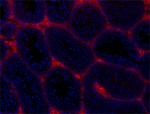
C57BL/6 mouse frozen testis section was fixed with 4% parafo... -
Biotin anti-mouse CD54
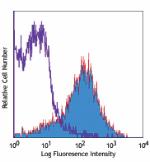
C57BL/6 mouse splenocytes stained with biotinylated YN1/1.7.... -
FITC anti-mouse CD54
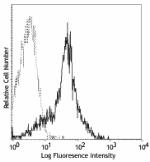
C57BL/6 splenocytes stained with YN1/1.7.4 FITC -
PE anti-mouse CD54
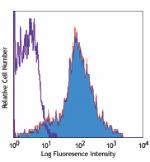
C57BL/6 mouse splenocytes stained with YN1/1.7.4 PE -
Alexa Fluor® 488 anti-mouse CD54
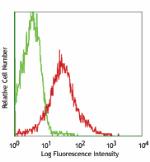
C57BL/6 splenocytes stained with YN1/1.7.4 Alexa Fluor® 488 -
Alexa Fluor® 647 anti-mouse CD54

C57BL/6 mouse splenocytes stained with YN1/1.7.4 Alexa Fluor... -
Pacific Blue™ anti-mouse CD54
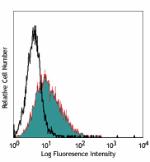
C57BL/6 mouse splenocytes stained with YN1/1.7.4 Pacific Blu... -
APC anti-mouse CD54
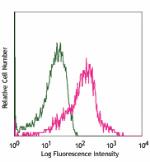
C57BL/6 splenocytes stained with YN1/1.7 APC -
PerCP/Cyanine5.5 anti-mouse CD54
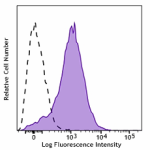
C57BL/6 mouse splenocytes were stained with CD54 (clone YN1/... -
PE/Cyanine7 anti-mouse CD54
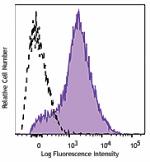
C57BL/6 mouse splenocytes were stained with CD54 (clone YN1/... -
APC/Fire™ 750 anti-mouse CD54

C57BL/6 mouse splenocytes were stained with CD54 (clone YN1/... -
TotalSeq™-A0074 anti-mouse CD54
-
PE/Dazzle™ 594 anti-mouse CD54
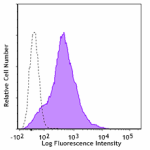
C57BL/6 mouse splenocytes stained with CD54 (clone YN1/1.7.4... -
Ultra-LEAF™ Purified anti-mouse CD54

C57BL/6 mouse splenocytes stained with purifid YN1/1.7.4, fo... -
TotalSeq™-C0074 anti-mouse CD54
-
TotalSeq™-B0074 anti-mouse CD54
-
Brilliant Violet 421™ anti-mouse CD54
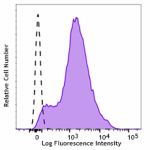
C57BL/6 mouse splenocytes stained with anti-mouse CD54 (clon... -
Brilliant Violet 711™ anti-mouse CD54
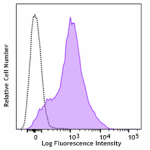
C57BL/6 splenocytes were stained with anti-mouse CD54 (clone... -
Brilliant Violet 785™ anti-mouse CD54
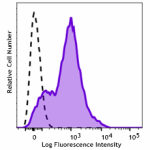
C57BL/6 mouse splenocytes were stained with anti-mouse CD54 ... -
Brilliant Violet 605™ anti-mouse CD54

C57BL/6 mouse splenocytes were stained with anti-mouse CD54 ...
